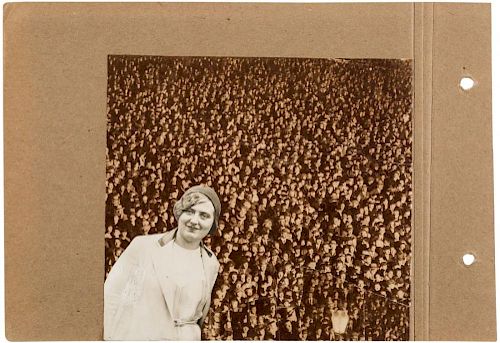ALEXANDER ZHITOMIRSKIY (RUSSIAN 1907-1993)
Lot 183
About Seller
Shapiro Auctions
566 East Boston Post Road
Mamaroneck, NY 10543
United States
Our auctions feature an impressive selection of fine art, decorative art, rare books, icons, militaria, and other objects from antiquity to the present. Shapiro Auctions advertises globally and has clients all over the world, while providing a rare combination of personal service and the ability to ...Read more
Categories
Estimate:
$5,000 - $7,000
Absentee vs Live bid
Two ways to bid:
- Leave a max absentee bid and the platform will bid on your behalf up to your maximum bid during the live auction.
- Bid live during the auction and your bids will be submitted real-time to the auctioneer.
Bid Increments
| Price | Bid Increment |
|---|---|
| $0 | $25 |
| $500 | $50 |
| $1,000 | $100 |
| $2,000 | $250 |
| $5,000 | $500 |
| $10,000 | $1,000 |
| $20,000 | $2,500 |
| $50,000 | $5,000 |
| $100,000 | $10,000 |
| $200,000 | $25,000 |
About Auction
By Shapiro Auctions
May 21, 2016 - May 22, 2016
Set Reminder
2016-05-21 10:00:00
2016-05-22 10:00:00
America/New_York
Bidsquare
Bidsquare : Fine & Decorative Art and Antiques Auction
https://www.bidsquare.com/auctions/shapiro/fine-decorative-art-and-antiques-auction-1470
Shapiro Auctions info@shapiroauctions.com
Shapiro Auctions info@shapiroauctions.com
- Lot Description
ALEXANDER ZHITOMIRSKIY (RUSSIAN 1907-1993)
Bride Crowd, 1932
double-sided gelatin silver photo-collage mounted on an album page
14 x 15 cm (5 1/2 x 6 in.)
PROVENANCE
Acquired from the family of the artist by the present owner
LOT NOTES:
Alexander Zhitomirsky was born on January 11, 1907, in Rostov-on-Don, Russia. At the age of eighteen, he moved to Moscow, where he studied with Ilya Mashkov and Vladimir Favorsky at the Association of Artists of Revolutionary Russia. In 1930, after several years of working as an illustrator for magazines and creating posters, Zhitomirsky started working as a caricaturist for Rabochaya Gazeta [The Workers` Newspaper]. Eventually he became the art director of both Industria Sotsializma [Socialist Industry] and Illustrirovannaya Gazeta [Illustrated Newspaper]. During the 1930s, Zhitomirsky produced personal collages and albums dedicated to his wife, Erika, despite the fact that Stalinist censorship in this period was at its peak and personal language and creativity was strictly forbidden. During WWII, he designed and illustrated publications for the front, including Front Illustrierte, a magazine specifically targeted at German soldiers and dropped from airplanes over enemy lines. From 1950 until 1992, Zhitomirsky worked as the head art director of the magazine Soviet Union, and throughout the Cold War produced powerful propaganda photomontages on peace, disarmament, capitalism, government leaders, and other themes dear to the Soviet regime. In 1957, he met and became close friends with German artist John Heartfield in Moscow. In 1967, he was named an Honorary Artist of the Russian Federation, and in 1978 he received the title of People`s Artist of Russia. Alexander Zhitomirsky died in Moscow in 1993.
Zhitomirsky`s work is considered pivotal in the development of the art of the political photomontage. Today, he is recognized as one of the greatest masters of the genre, alongside Alexander Rodchenko, El Lissitzky, Gustav Klutsis, and the German artist John Heartfield. Furthermore, as Konstantin Akinsha, art historian and critic, observes in his essay Alexander Zhitomirksy, Portrait of the Artist as a Young Man: In Zhitomirsky`s case, photomontage was not just `the most progressive` way to design a book cover or a poster, but his own everyday language of intimate communication. - Buyer's Premium



 EUR
EUR CAD
CAD AUD
AUD GBP
GBP MXN
MXN HKD
HKD CNY
CNY MYR
MYR SEK
SEK SGD
SGD CHF
CHF THB
THB













